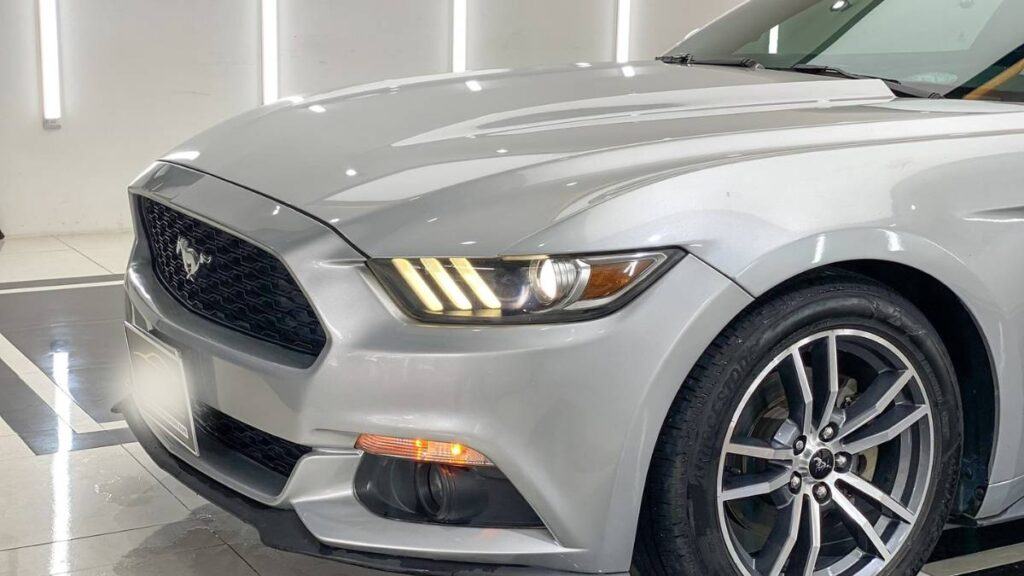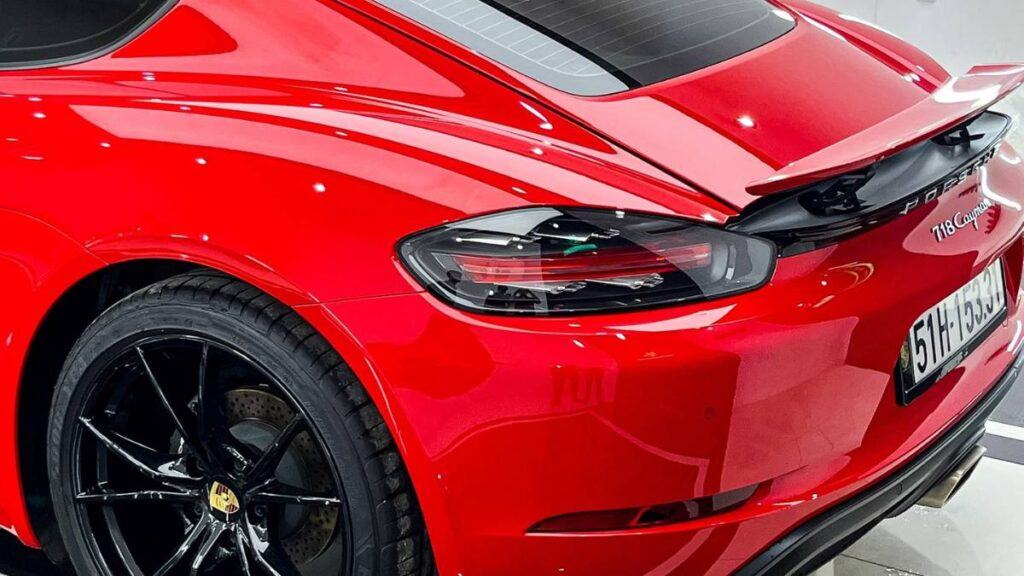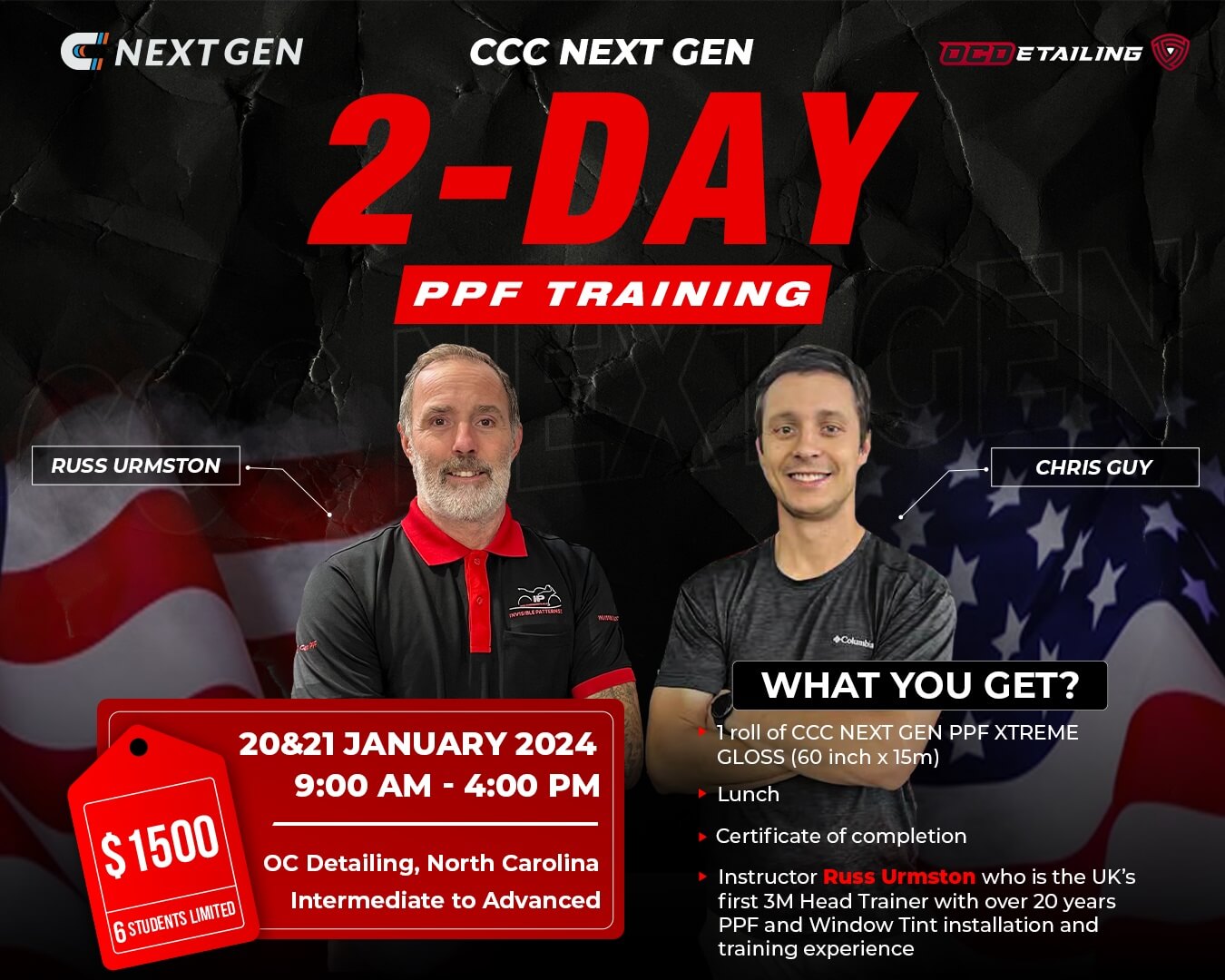In the dynamic realm of automotive care, Paint Protection Film (PPF) has emerged as a go-to solution for enthusiasts and car owners seeking to safeguard their vehicles from the rigors of daily life on the road. A concern often raised within this sphere is the potential for PPF to gradually transform from its original transparent state to a more yellowish hue over time.
In this article, from the expert team at CCC Next Gen, we will delve into the intricate nuances of PPF yellowing, unraveling the reasons behind its implications and presenting an effective roadmap on how to prevent it.
What Does Yellowing Mean?
Yellowing in Paint Protection Film (PPF) extends beyond mere aesthetics. It represents a noticeable shift from its original transparent state to a warmer, yellowish tone. This transformation goes beyond visual concerns, casting doubt on the film’s effectiveness in fulfilling its protective purpose. As the film undergoes this change, questions arise about its ability to shield the vehicle’s paintwork from the environmental elements it was designed to combat. This shift in coloration is a visible indicator of the film’s exposure to UV rays and environmental pollutants, prompting a reevaluation of its ongoing ability to provide optimal protection. Thus, addressing and preventing yellowing in PPF becomes integral for maintaining the vehicle’s aesthetic appeal and ensuring the film continues to fulfill its crucial role as a protective barrier against the rigors of the road.
Why Would PPF Yellow?
The yellowing of Paint Protection Film (PPF) is a nuanced phenomenon intricately tied to many environmental and material factors. At the forefront of these contributors is the extended exposure to UV rays. This relentless force can initiate chemical reactions within the PPF’s molecular structure. Over time, this exposure induces alterations in the film’s composition, culminating in the visible manifestation of a yellow discoloration.
Environmental pollutants add another layer of complexity to this process. Cumulative effects from impurities present in the air, such as industrial emissions and airborne contaminants, gradually settle onto the PPF surface. These foreign particles can initiate chemical reactions and further exacerbate the yellowing process, compromising the film’s original transparency and aesthetic appeal.

Harsh weather conditions serve as the third key player in this intricate scenario. Constant onslaughts from elements like rain, snow, and extreme temperatures contribute to the wear and tear of the PPF material. These adverse weather conditions physically stress the film and intensify the impact of UV rays and environmental pollutants, hastening the overall degradation.
As these environmental and material factors take their toll, the molecular structure of the PPF undergoes changes that extend beyond surface-level discoloration. The compromised structure raises concerns about the film’s functionality, potentially diminishing its ability to protect the vehicle’s paintwork.
Understanding this intricate interplay of factors is crucial for car enthusiasts and owners seeking to preserve the longevity and effectiveness of their PPF investment. By comprehending the underlying causes of yellowing, individuals can adopt preventive measures and make informed choices, ensuring that their PPF continues to serve as a reliable guardian against the harsh realities of the road.
How To Prevent PPF From Yellowing
Preventing PPF yellowing requires a proactive approach, combining proper care practices with selecting high-quality materials. CCC Next Gen recommends the following comprehensive strategies to ensure your PPF retains its clarity and appearance over the long term:
Choose Premium Grade PPF
Investing in a high-quality, premium-grade PPF (Paint Protection Film) is the foundational step in reducing the risk of yellowing. CCC Next Gen proudly introduces a premium-grade Paint Protection Film that integrates advanced technology and durable materials to provide unparalleled protection.
Regular Cleaning
Establishing a regular cleaning regimen for your vehicle, specifically focusing on the PPF, is paramount. Utilize a gentle car wash soap and a soft microfiber cloth to clean the film regularly, effectively removing contaminants that can contribute to yellowing over time.

Avoid Harsh Chemicals
Steering clear of abrasive or harsh cleaning chemicals is crucial. These chemicals can expedite the breakdown of the film, hastening the yellowing process. Stick to cleaning products the PPF manufacturer recommends to ensure compatibility and optimal performance.
Introducing premium grade Paint Protection Film by CCC Next Gen
CCC Next Gen takes immense pride in presenting a Paint Protection Film transcending conventional standards. Crafted with cutting-edge technology, this premium-grade PPF offers exceptional clarity and durability and boasts heightened resistance to yellowing. When you choose CCC Next Gen’s PPF, you’re not merely investing in protection; you’re investing in your vehicle’s future resilience and aesthetics.
For inquiries, expert advice, or to place your product orders, reach out to CCC Next Gen at +84 906 189 698 or email [email protected].
In conclusion, understanding the multifaceted factors contributing to PPF yellowing and implementing a proactive regimen is crucial for preserving your vehicle’s paint’s aesthetic appeal and protective qualities. With CCC Next Gen’s premium-grade Paint Protection Film, you can drive confidently, knowing that your investment is fortified by advanced technology and the expertise of a team committed to excellence.


